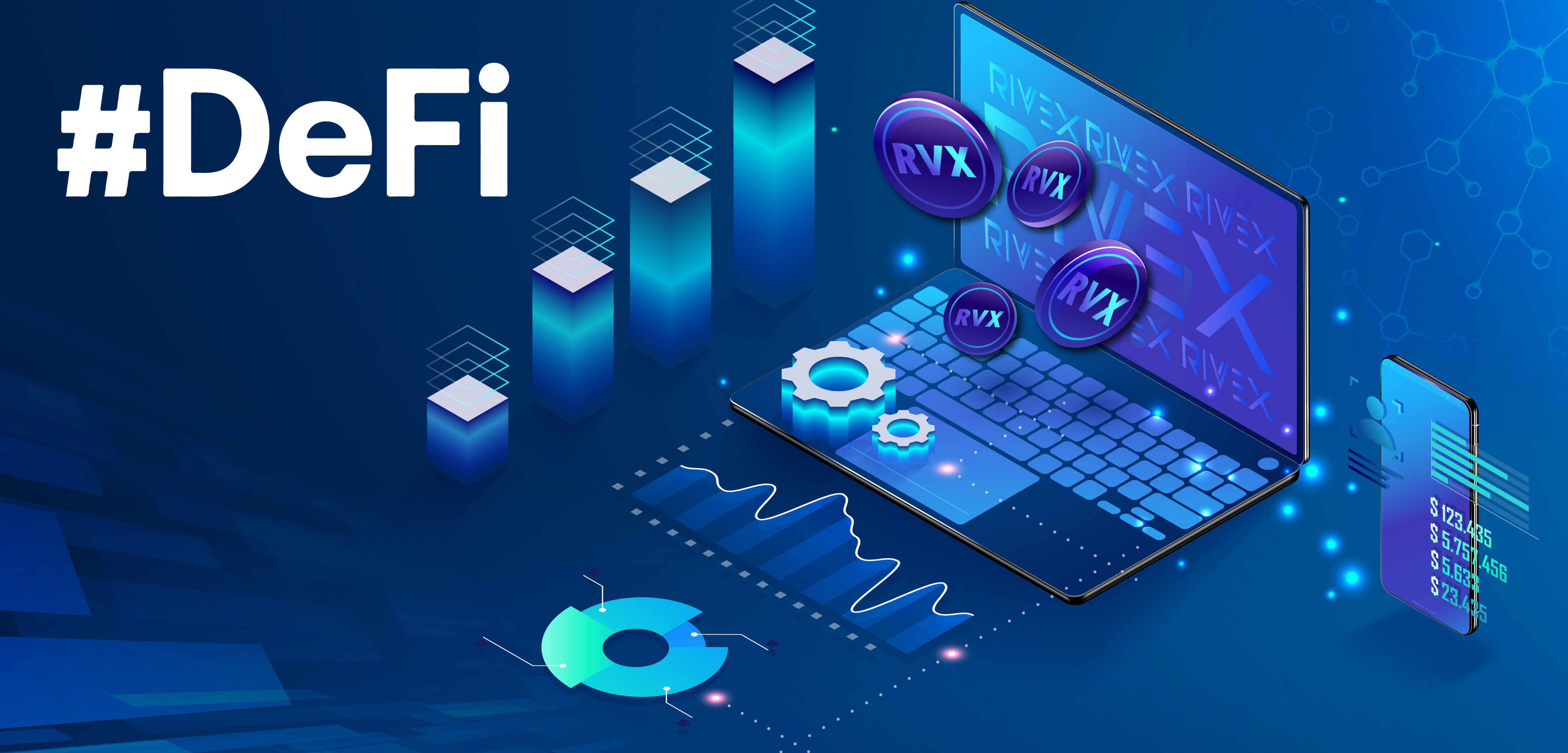Decentralized finance, or DeFi for short, refers to a digital financial system that operates on a blockchain network, such as Ethereum. DeFi platforms use smart contracts and decentralized technology to provide financial services and products, such as lending, borrowing, trading, and insurance, without the need for centralized intermediaries.
DeFi differs from traditional finance in several key ways. Firstly, traditional finance relies on centralized intermediaries, such as banks and financial institutions, to provide financial services and products. In contrast, DeFi is based on decentralized technology, which means that there is no central point of control or failure. This makes DeFi more transparent, secure, and resistant to censorship.
Another key difference is that traditional finance is often exclusive, with strict requirements and barriers to access, while DeFi is more inclusive, allowing anyone with an internet connection to participate. Additionally, DeFi is open-source, meaning that anyone can access and review the code, whereas traditional finance is often proprietary and closed off.
DeFi offers a range of new financial products and services that are not available in traditional finance, such as decentralized exchanges, lending and borrowing platforms, stablecoins, and tokenization platforms. This allows for greater innovation and financial empowerment for individuals and businesses.
Types of DeFi platforms
According to tradecrypto.com, there are several types of decentralized finance (DeFi) platforms, each with their own unique features and uses. Some of the most popular types of DeFi platforms include:
- Decentralized exchanges (DEXs): DEXs are decentralized platforms that allow users to buy and sell cryptocurrencies without the need for a centralized intermediary. They use smart contracts to facilitate trades and ensure that both parties meet their obligations. Some examples of DEXs include Uniswap and Kyber Network.
- Lending and borrowing platforms: These platforms allow users to lend and borrow cryptocurrencies, with interest rates set by the market. They use smart contracts to ensure that borrowers are held accountable for repaying their loans. Some examples of lending and borrowing platforms include Aave and Compound.
- Stablecoins: Stablecoins are cryptocurrencies that are pegged to a stable asset, such as the U.S. dollar, in order to reduce volatility. They are often used to facilitate lending and borrowing on DeFi platforms. Some examples of stablecoins include DAI and USDC.
- Tokenization platforms: These platforms allow users to tokenize real-world assets, such as real estate or art, and trade them on the blockchain. This opens up new opportunities for investment and ownership. Some examples of tokenization platforms include Polymath and Harbor.
- Insurance platforms: These platforms allow users to purchase insurance policies and to become an insurer, these policies are smart-contract based and are transparent, thus allowing for trustless interactions.
These are just a few examples of the types of DeFi platforms that are currently available. As the field of DeFi continues to grow and evolve, we can expect to see even more innovative and diverse platforms emerge in the future.
Examples of DeFi platforms
Here are some examples of popular decentralized finance (DeFi) platforms:
- Uniswap: A decentralized exchange (DEX) built on the Ethereum blockchain that allows users to trade cryptocurrencies without the need for a centralized intermediary.
- Compound: A lending and borrowing platform that allows users to earn interest on their cryptocurrency holdings and borrow against them.
- DAI: A stablecoin pegged to the US dollar, which is used as a medium of exchange on many DeFi platforms.
- MakerDAO: A decentralized platform that allows users to borrow DAI with Ether as collateral
- Aave: A lending and borrowing platform that allows users to borrow cryptocurrencies and earn interest on their deposits. There have been a lot of rumors lately about is aave lending safe, but so far there is no clear evidence against the platform.
- Kyber Network: A decentralized exchange that allows for instant trading of different tokens and coins.
- Chainlink: A decentralized oracle network that allows smart contracts to interact with external data sources such as stock prices, weather data, and more.
- YFI (yearn.finance): An investment platform that utilizes a number of DeFi protocols to maximize yield for users.
These are just a few examples of the many DeFi platforms currently available. The field of DeFi is rapidly evolving and new platforms are constantly emerging, so this list is not exhaustive.
Future developments of DeFi segment
As the field of decentralized finance (DeFi) continues to grow and evolve, there are several potential future developments and impact that we can expect to see:
- Integration with traditional finance: As DeFi gains mainstream adoption, we may see traditional financial institutions begin to adopt and integrate DeFi technology and products into their own systems.
- Advancements in technology: As blockchain technology continues to develop, we can expect to see improvements in scalability and security, which will help to further increase the adoption and use of DeFi platforms.
- Increased financial inclusion in developing countries: DeFi’s inclusiveness, low barriers to access and low-cost transactions could allow for greater financial empowerment and inclusion in developing countries, where traditional banking services are often inadequate.
- Impact on the traditional financial system: DeFi’s decentralized and trustless nature could potentially disrupt traditional financial systems by reducing the need for centralized intermediaries, and providing new opportunities for investment and ownership.
- Impact on traditional banking services: DeFi could displace traditional banking services such as remittances, lending, and borrowing, and other financial services, which would potentially reduce the cost of these services and make them more accessible to a wider range of people.
It’s important to note that these developments are still in the early stages, and it’s hard to predict the exact shape and pace that they will take in the future, but they all point towards DeFi’s potential to revolutionize the financial industry.
Conclusion
The potential for decentralized finance (DeFi) to revolutionize the financial industry is significant. By using smart contracts and decentralized technology, DeFi platforms can provide financial services and products that are more accessible, transparent, and secure than traditional finance.
DeFi can also provide new financial products and services that are not available in traditional finance, such as decentralized exchanges, lending and borrowing platforms, stablecoins, and tokenization platforms. This allows for greater innovation and financial empowerment for individuals and businesses.
Moreover, DeFi’s decentralized and trustless nature could potentially disrupt traditional financial systems by reducing the need for centralized intermediaries and providing new opportunities for investment and ownership.
However, it’s important to note that DeFi is still a relatively new and rapidly evolving field, and there are still many challenges and limitations that need to be overcome. It’s important to conduct thorough research and due diligence before participating in any DeFi platform or product.
In conclusion, the field of DeFi has the potential to revolutionize the financial industry and make financial services more accessible, transparent, and secure. I encourage further research and exploration of the field to fully understand its capabilities, limitations and potential future developments.
I am Mikaela Garcia, a professional trader. I have been trading stocks and options for over 30 years. I am 54 years old, and I have three children. My son is a doctor, my daughter is a lawyer, and my youngest son is in college.
I started trading when I was 24 years old. At the time, I was working as a secretary at a bank. The traders would come down to the lobby and tell us all about their big wins and losses from the day's trading. I was fascinated by their stories, and I decided to learn more about trading.
I took some classes at the local community college, and then I started trading stocks and options on my own account. Over the years, I have developed


